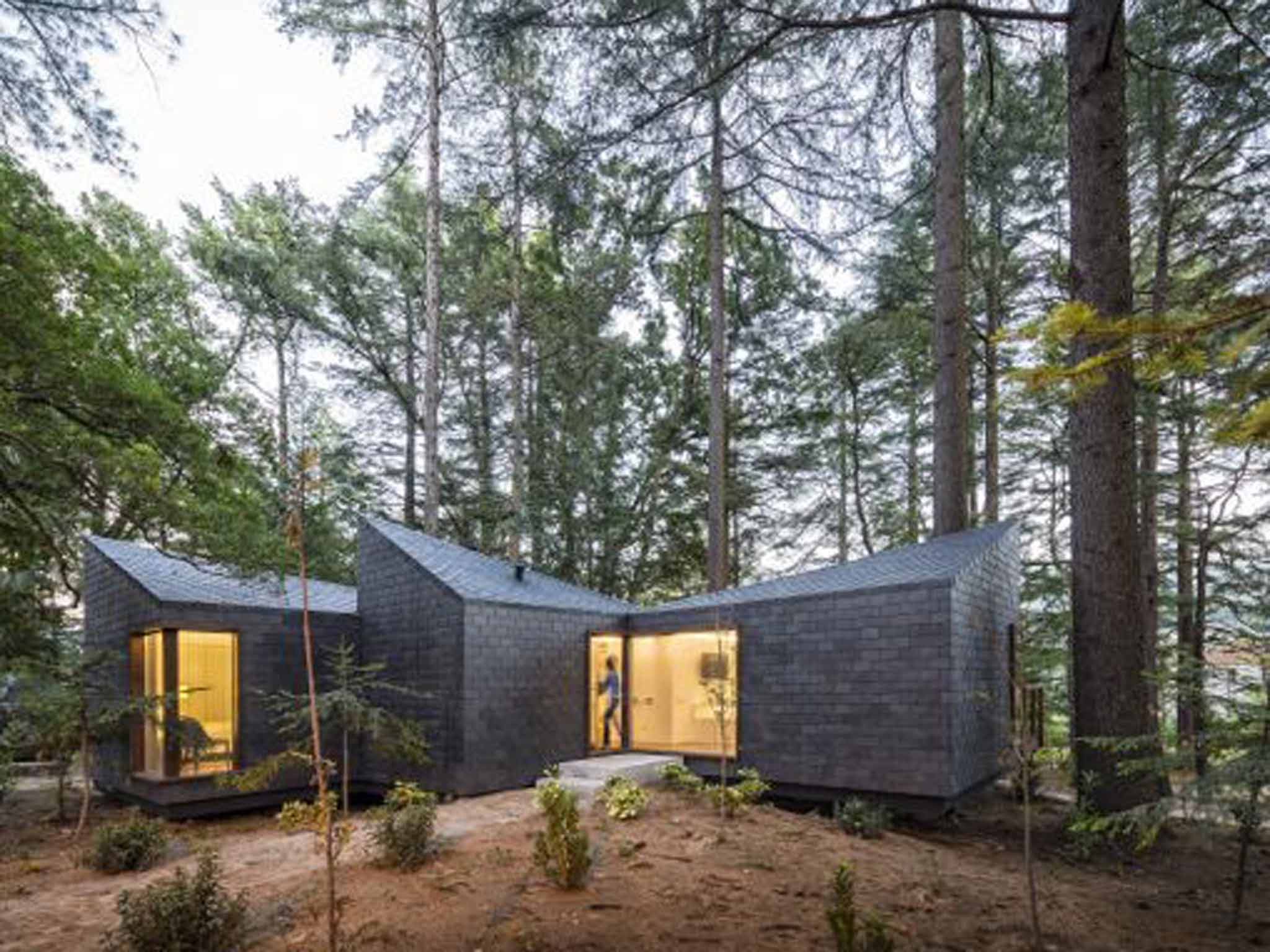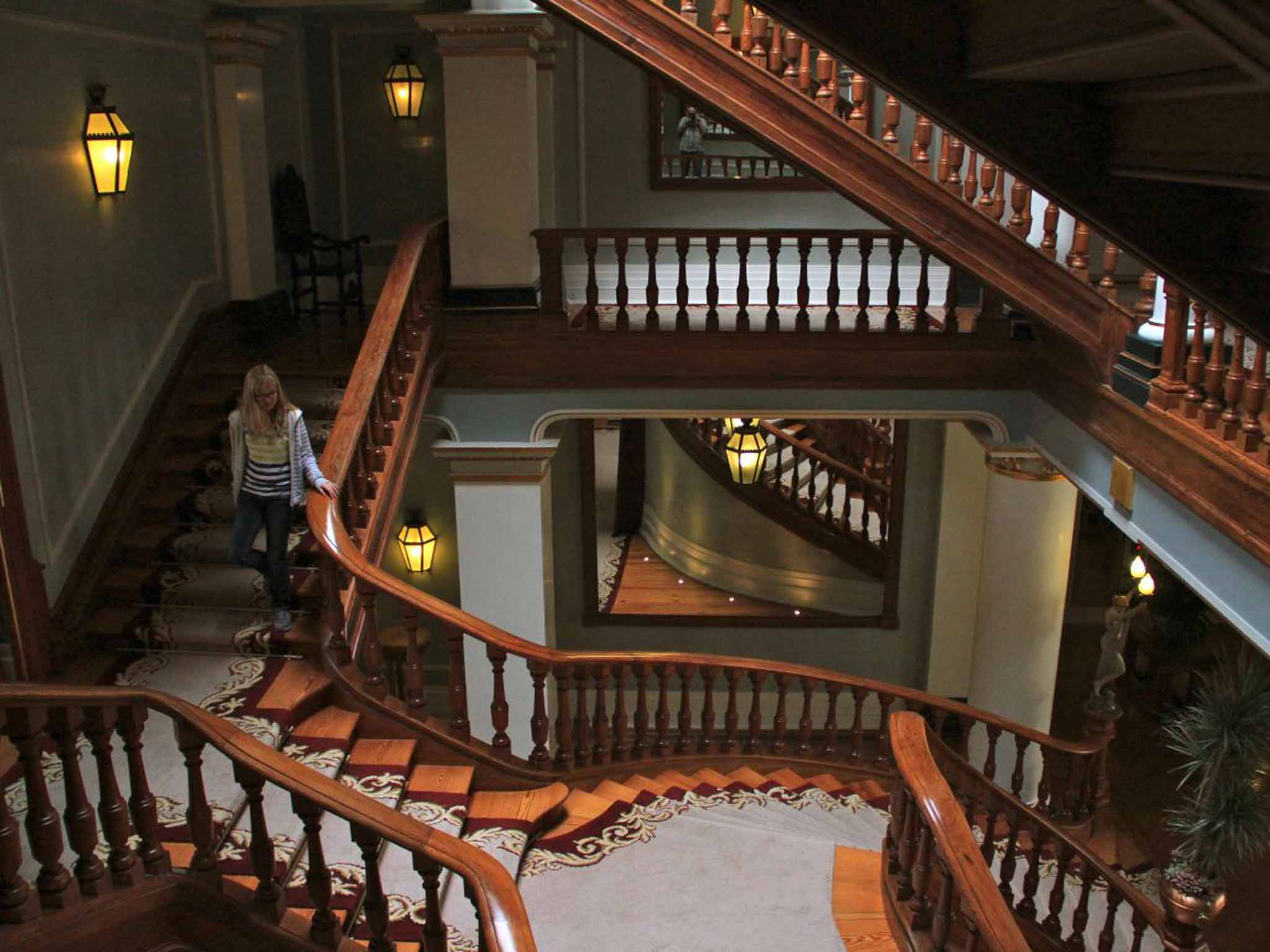Portugal: Parks, palaces and recreation
In the country's vine-draped north, Mike Unwin and his family visit two very special places to stay

Your support helps us to tell the story
From reproductive rights to climate change to Big Tech, The Independent is on the ground when the story is developing. Whether it's investigating the financials of Elon Musk's pro-Trump PAC or producing our latest documentary, 'The A Word', which shines a light on the American women fighting for reproductive rights, we know how important it is to parse out the facts from the messaging.
At such a critical moment in US history, we need reporters on the ground. Your donation allows us to keep sending journalists to speak to both sides of the story.
The Independent is trusted by Americans across the entire political spectrum. And unlike many other quality news outlets, we choose not to lock Americans out of our reporting and analysis with paywalls. We believe quality journalism should be available to everyone, paid for by those who can afford it.
Your support makes all the difference.What's your idea of a fantasy holiday retreat? A Belle Epoque palace, all glittering chandeliers and cascading staircases, straight from Cinderella's ball? Or a discreet forest hideaway, perhaps, with nothing but birds and squirrels for company? An October week in northern Portugal, with my wife and 12-year-old daughter, was a chance to try out both options.
The Vidago Palace and Pedras Salgadas Nature Park are two very different properties recently developed by Unicer, a Portuguese company that bottles natural spa mineral water. Both lie a short drive inland from Porto. As we pulled out from the airport, I reflected that my family's tastes had hitherto tended towards park than palace. But perhaps I'd underestimated our capacity for fine living.
Pedras Salgadas, first up, comprises a vast swathe of natural wood in the small spa town of the same name. Its thermal springs once made it a holiday spot for royalty. Today, the turn-of-the-century stone buildings house a restaurant and other facilities, and the waters are still bottled at five springs on site. But it was the accommodation that most grabbed us. The park's prize-winning "Eco Houses" form a series of distinctive, triangular blocks, which, tucked in among the oaks, pines and chestnuts, resemble the scattered parts of an enormous, dismantled Toblerone bar.
From outside, their design and natural materials merge so seamlessly into the leafy play of light and shadow that we more than once lost our way home. Inside, the modern interior – all white, stylish simplicity – features huge windows that seem to usher the trees in among you.
It was tempting, amid such tranquillity, never to set foot outside the park. We wandered the woodland trails to the tap-tap of woodpeckers and watched the ceaseless drift of falling leaves as the forest carpeted its walkways in blazing autumn hues. And, while my wife headed to the spa for her lime and clay massage, my daughter was content to curl up on the deck with a book, or potter about with phone camera to snap garish fungi among tree roots.
Mountain bikes stirred us into action. And one afternoon we ventured out with Nuno Andrés, a local mountain bike guide, for a gentle 10km lap of the countryside. "Nothing to worry about," said our wiry, Lycra-clad leader. And indeed, after some initial wobbling along a waterlogged forest trail, we picked up our two-wheeled confidence and rattled along beside an old railway line, through a vineyard and down the alleys of a snoozing village, sending cats scampering for doorways.
An hour and a half's drive north took us to the rugged limestone plateau of the Montesinho Natural Park, which forms Portugal's northernmost border with Spain. Grabbing maps and a packed lunch, we set out on the 7.5km Calcada loop – one of numerous trails – hiking over a stony hillside, down into a forested valley and across a medieval bridge into the tiny hamlet of Moimenta. The park leaflets told us that this was wolf country – indeed, en route, we'd passed a wolf footbridge spanning the motorway. Nothing so formidable greeted us, but we captured a praying mantis, watched a basking ocellated lizard and glimpsed a goshawk through the trees. The drive home, with sunset over deep valleys of chestnut, was glorious.
On our last night at Pedras Salgadas we decamped into the treetops. The resort has two treehouses, built from the same materials as the Eco Houses but raised on stilts and reached by a wooden walkway from above. Our self-contained pod was perched 10 metres high, one window peering into the branches, another gazing at the stars. This was a definitely a place for carefully coordinated movements, but the sensation of loftiness, with birds passing beneath, was magical.

So we'd done the back-to-nature bit, albeit in considerable comfort. Now it was time to up the grandeur quotient. We found Vidago Palace, a 20-minute drive north, cloaked in the same rich forest. But from the moment we rocked up it was clear we had entered another world. After years of neglect, this imposing building was reborn in 2010, exactly a century after it was built. Today, its interior is decked out with an aristocratic elegance – wood panelling, silk fabrics and sumptuous wallpaper – that left us feeling distinctly inadequate. This misgiving was exacerbated by multiple reflections in the immense mirrors of the central staircase. Inside our room the furnishings were just as grand. Safe behind the door, we collapsed on the enormous bed with nervous giggles.
But we soon rallied, and the hotel turned out not to be quite so overwhelming. Soon, we had ditched the apologetic shuffling and took on the plush corridors as though we'd never seen a treehouse. The food in the Ball Room Restaurant was a classy as the décor, but nothing topped breakfast in the Winter Garden where – under the wrought iron and glass skylight, on gleaming marble and velvet banquettes – we savoured our eggs Benedict and mapped out the day ahead.
There was plenty to do – golf, a spa, swimming pools, walking around the palace grounds. But with northern Portugal to explore we took to the road. In historic Chavez we meandered over the old Roman bridge to the military museum. At the Casa de Mateu, we negotiated a knee-high maze and took a guided tour of the 15th-century house, crammed with colonial plunder and religious relics. Best, though was the Douro Valley, home to some of Portugal's most celebrated wine estates. An hour's winding drive east of Vidago took us high among the steep terraces, where the ancient vineyards and olive groves were as tightly arrayed as Balinese paddy fields. Huge white signposts on the hillsides proclaimed the owners of each estate. We dropped into one of them, Quinta Nova, for lunch and a tour.
Our guide, Susanna Pinho, led us from sunlit vineyard to chilly cellar. She explained, among other things, how grapes have not been trodden since 2007 but an automatic crusher uses silica to replicate the effect of human feet, while preserving the vital seeds and tanins. But there was only so much information we could absorb before sampling the wares on the restaurant terrace, with its glorious views down to the river. While a blackcap twittered away from the lavender bushes, we sipped a selection of estate wines which complemented a menu that – from the duck with fennel to the orange brulé dessert – was nothing short of sensational.
After lunch Susanna led us down to the river, where we boarded a yacht for a two-hour valley cruise. Slumped on beanbags, watching the afternoon sun slant across the vineyards, a little further sampling seemed appropriate. But nothing excessive. After all, while the road of excess may – according to William Blake – lead to the palace of wisdom, we already had a palace of our own awaiting us.
Getting there
Mike Unwin travelled with cheapflights.co.uk, which offers returns from London to Porto starting at £89pp. Porto is served from the United Kingdom by FlyBe, Ryanair, TAP Portugal and easyJet.
Staying there
Vidago Palace (00 351 276 990 920; vidagopalace.com). Doubles start at €140 including breakfast, rising to €930 for a suite. Pedras Salgadas (00 351 259 437 140; pedras salgadaspark.com). Rates start at €200, including breakfast in both the Eco Houses (which sleep four to six) and the treehouses, which sleep two.
Visiting there
Montesinho Natural Park (montesinho.com/en).
Casa de Mateus (casademateus.com).
Quinta Nova Estate (quintanova.com).
More information
Join our commenting forum
Join thought-provoking conversations, follow other Independent readers and see their replies
Comments